How do I update my Mac when it says no update? Here are possible solutions that can help you solve this issue and update your Mac or MacBook Pro.
| Workable Solutions | Step-by-step Troubleshooting |
|---|---|
| 1. Check If Your Mac Device Support the macOS Version | Select the Apple icon. Choose About This Mac from the drop-down menu. Check the detailed...Full steps |
| 2. Check Apple's Software Update Servers Condition | Sometimes, the issue may not be something to do with the system. The Apple servers may crash when to...Full steps |
| 3. Shut Down and Restart Your Mac or MacBook | Go to the Apple icon. Click on Restart. Wait for the device to turn off and turn it on again...Full steps |
| 4. Search for macOS Version in Apple App Store | Open the App Store on your Mac. Type in macOS Ventura/macOS Monterey or other versions...Full steps |
| Other Solutions | Go to the Apple menu. Choose System Settings from the drop-down. Select Network from the sidebar...Full steps |
Why Does My Mac Say No Update Available
Is your macOS up to date? Ensuring your Mac is upgraded to the latest version of macOS is critical for its smooth functioning. Keep in mind that Apple rolls out new updates to get rid of bugs or glitches. Besides, the process is easy and takes only a few seconds.
However, there are instances when users report that Mac says there are no updates available when there are updates present. How do I update my Mac when it says no update? Before troubleshooting this issue, there are several reasons that can explain why your system is showing no update available.
Reason 1. Compatibility Issues
Sometimes, an update might come out, but it might not be compatible with your model. Your Mac doesn't show the update since it cannot download macOS Ventura and install the latest version.
Reason 2. Unstable Internet
Another reason Mac says no update is the lack of a strong internet connection. If the connectivity is unstable, the system might not display the available updates.
Reason 3. Issues with Apple's Servers
At times, the problem might not even be something at your end. Check the system status page of Apple and see if the servers are working fine. If you see red signals, it means the server is down.
Before proceeding with the solutions, look at the attached video for more information. Check it out:
- 00:00 Understanding the basic issue with missing updates
- 02:02 Find the order of the operating systems
- 04:33 Connect to the App Store to get the update
How Do I Update My Mac When It Says No Update [8 Solutions]
Is your Mac saying no update is available or update not found? Don't worry! Multiple solutions can help resolve the issue. To prevent the inconvenience of losing important data, it is recommended that you back up your important files via the EaseUS Data Recovery Wizard for Mac before installing or updating macOS.

Back Up Your Mac and Never Lose Data
Back up and restore your MacBook/iMac without Time Machine, iCloud, or external hard drives.
Then, use the free feature of this trusted tool to install macOS from an external hard drive; check out the steps below:
Step 1. Select a macOS version
Select a macOS version from the list, or click the "Refresh" option to get the downloaded macOS version. Or you can add a macOS installer from your disk by clicking the "Add" button. Insert a USB flash drive larger than 16 GB to save the macOS installer.
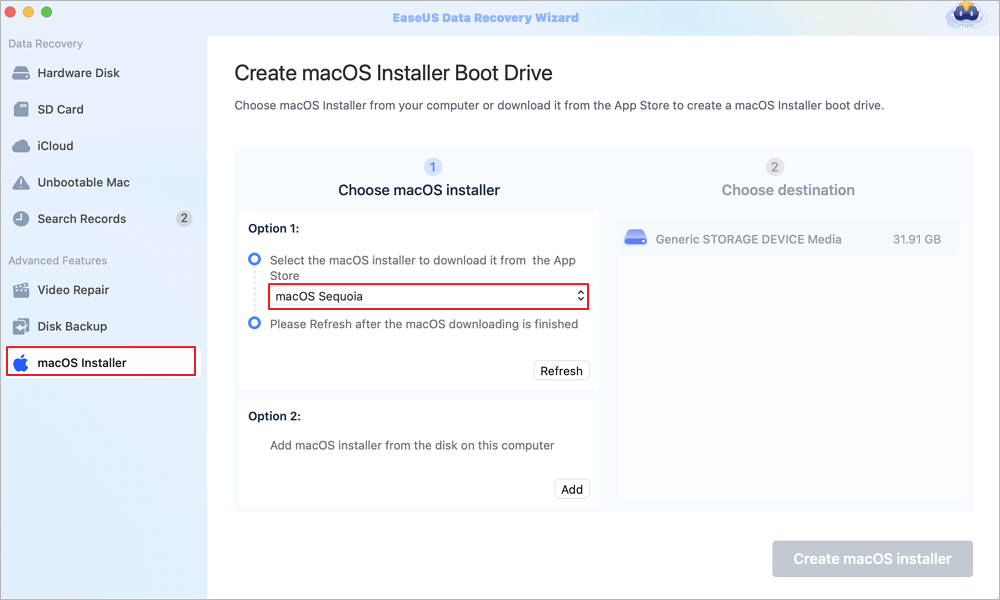
Step 2. Erase the USB flash drive
After choosing the USB flash drive, click the "Erase and create" option in the pop-up window to format your USB flash drive quickly, and then click the "Create macOS installer" button to continue.
- Note: This operation will delete all data on your USB flash drive, please back up important data in advance, or use EaseUS data recovery software to recover your data.
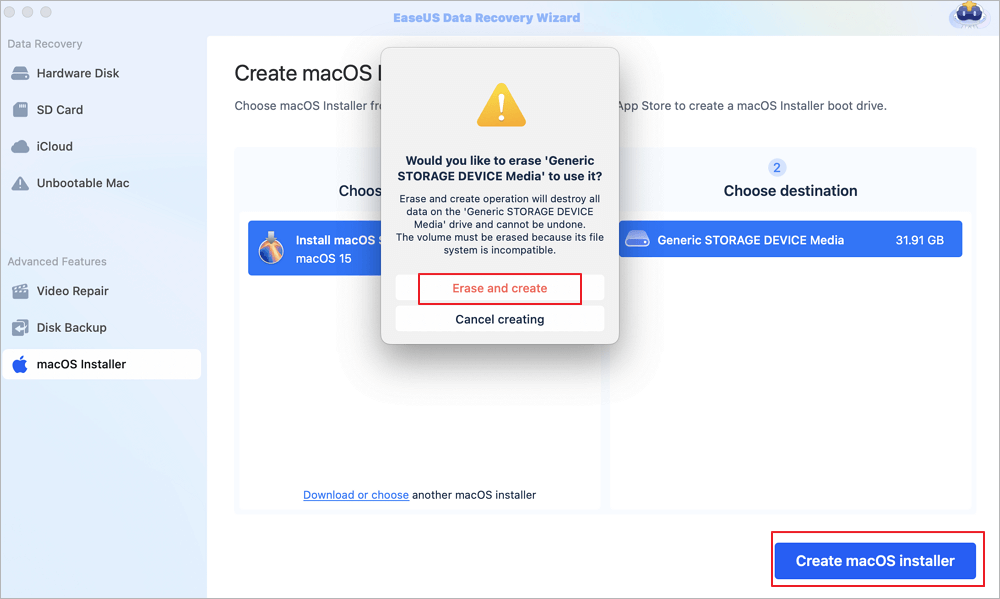
Step 3. Create the macOS installer boot drive
Wait for the process to complete, and click the "Finish" button. Your macOS installer boot drive has been successfully created!
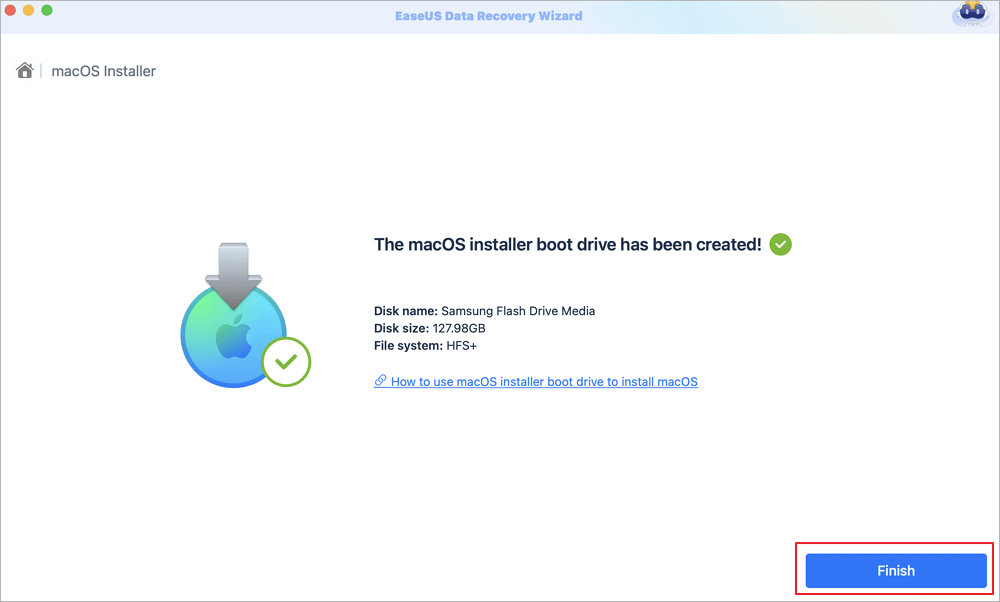
1. Check If Your Mac Device Support the macOS Version
Perhaps, the easiest solution is to check if your system can support the version you want to update. Keep in mind that older Macs do not support the latest OS versions. Here is what you can do:
Step 1. Select the Apple icon.
Step 2. Choose About This Mac from the drop-down menu.
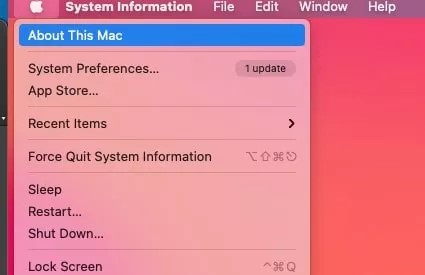
Step 3. Check the detailed information present on the Mac.
![]()
When you have more details on your Mac model, you need to cross-check with the list of compatible models. If you don't find your system on the list, your Mac cannot support the version you want to install.
Don't worry! If your Mac cannot support the macOS Ventura, you can still install it with other methods. You can read the following passage to know more:
How to Install macOS Ventura on Unsupported Mac with OpenCore Legacy Patcher
Do you want to install macOS Ventura on an unsupported Mac with OpenCore Legacy Patcher, we will show you a detailed method here!
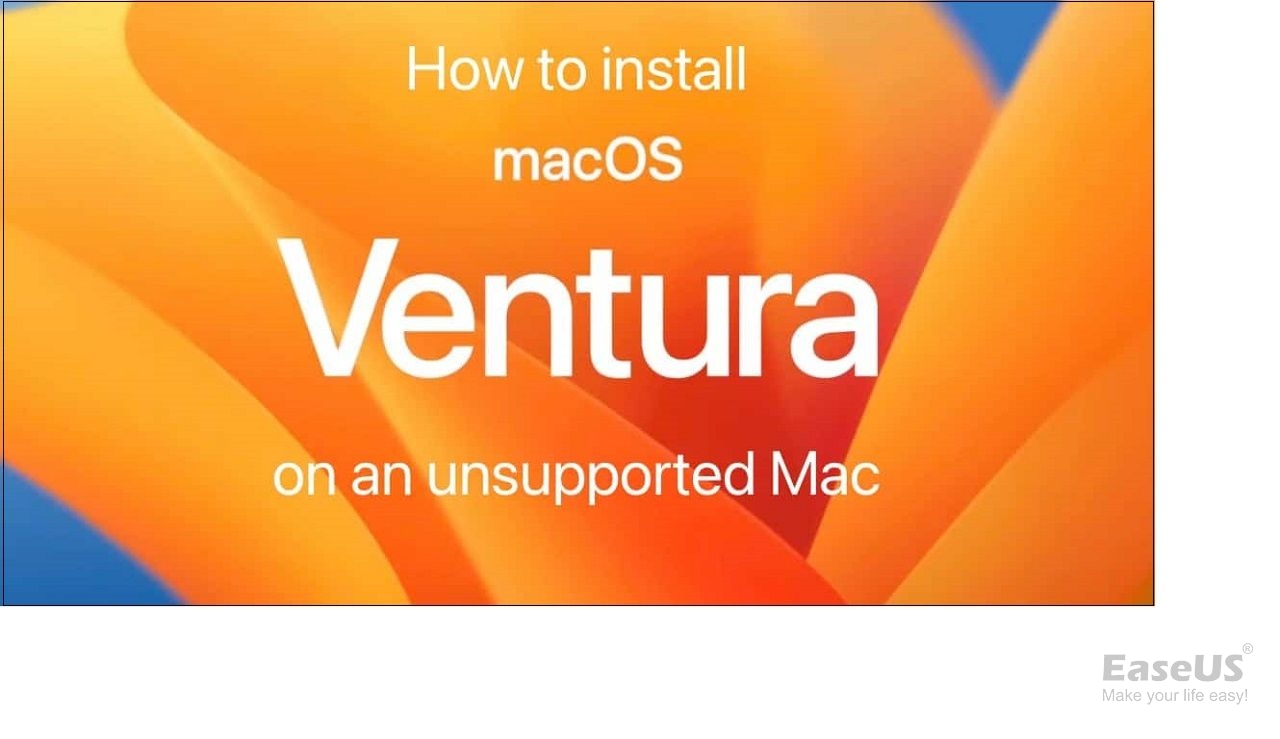
2. Check Apple's Software Update Servers Condition
Sometimes, the issue may not be something to do with the system. The Apple servers may crash when too many users attempt to install the update simultaneously. In that case, you might not find the update available.
It is straightforward to check if the Apple servers are fine. For this, you need to visit the System Status page of Apple. Here, search for macOS Software Update. Everything is fine if it is in green, but if not, you need to wait for some time.
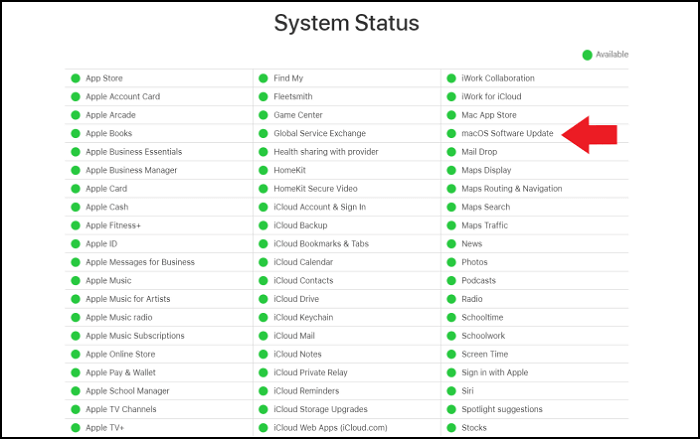
3. Shut Down and Restart Your Mac Device
You might not believe but restarting the device can resolve various problems. Try it once and see if it resolves the issue. To restart MacBook Pro or other Mac devices, follow these steps:
Step 1. Go to the Apple icon.
Step 2. Click on Restart.
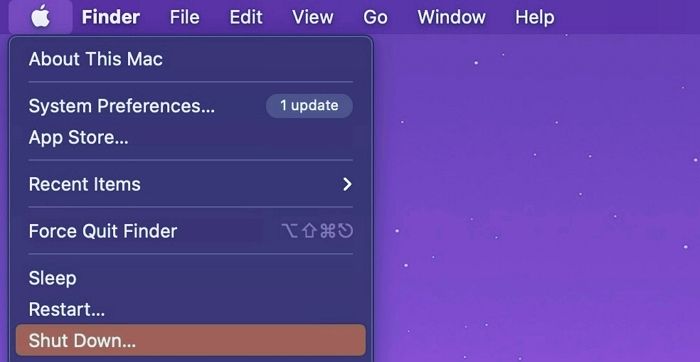
Step 3. Wait for the device to turn off and turn it on again.
4. Search for macOS Version in Apple App Store
Another solution for getting the update you want is to visit the App Store. The steps are simple and don't take much time. Check out these steps:
Step 1. Open the App Store on your Mac.
Step 2. Type in macOS Ventura/macOS Monterey or other versions.
Step 3. When it appears, click the View or GET button.

Step 4. If prompted, give the Apple ID.
5. Troubleshoot the Internet Connection on Mac
Another solution is to check the internet connection on Mac. The easiest hack is to simply open a tab in Safari and see if the website loads quickly. Alternatively, you can also check the network status via system settings.
Take a look at the steps:
Step 1. Go to the Apple menu.
Step 2. Choose System Settings from the drop-down.
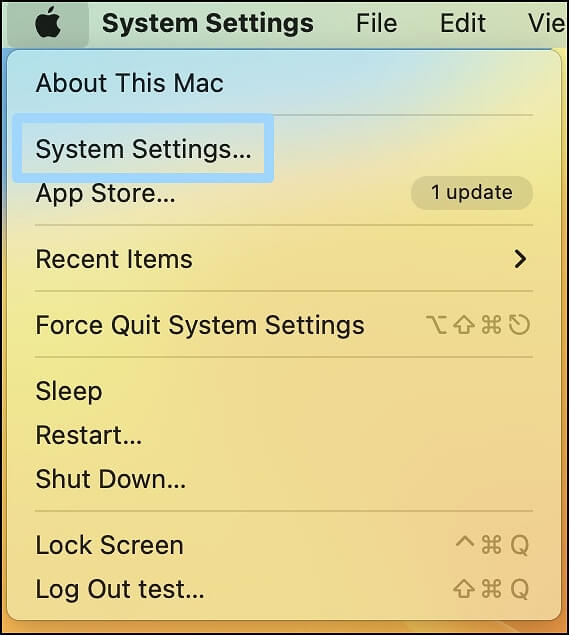
Step 3. Select Network from the sidebar to check the internet connection on the right hand. If the Wi-Fi is not connected, enable and connect it.

If you have a Wi-Fi connection, check your router and see if the connectivity is stable. If nothing works, you might need to change the service provider. If you have fixed the update issue, please share this page with more Mac users!
6. How to Update the macOS in Safe Mode
Did you know you can update macOS in Mac Safe Mode? Try this solution and see if it works.
For Apple Silicon Macs:
Step 1. Shut down the system.
Step 2. Press the Power button and hold it for a few seconds.
Step 3. Release it when the Startup Menu appears.
Step 4. Choose the Mac startup disk.
Step 5. Press and hold the Shift key.
Step 6. Choose to Continue in Safe Mode.
Step 7. Release the Shift key.
Step 8. Now you can proceed with the update.
For Intel Macs:
Step 1. Restart the system.
Step 2. When it boots, press and hold the Shift key.

Step 3. Wait for the login window.
Step 4. Let go of the Shift key.
Step 5. You might need to log in twice.
7. Uninstall Suspicious Applications on Mac
Sometimes, suspicious applications can interfere with the updating process on your Mac. If you have installed an app that is not entirely known or seems not to have any official status, uninstall it right away. For that, you can follow these steps:
Step 1. Go to the Finder icon.
Step 2. Long press the application icon.
Step 3. Click on the delete option, or drag the app to the Bin if it doesn't.

8. Download and Install the macOS Version Manually
Lastly, you can try the manual method. For this, you need to visit the official website of Apple. You can find the links to OS updates on the website. If you can't immediately find it, you can always use the search bar to locate it. After that, you need to click the link.
It will lead you to the App Store. Here, you will see the update you want. Choose the Get button and wait for the update to be downloaded. After that, you can install it.
How to Recover Data After macOS Update
Did you encounter data loss after updating your Mac? Sometimes, updating the system or encountering the macOS Ventura update failed can lead to crucial data loss. That is why having a backup of data is of utmost importance. However, if you haven't done so, don't worry!
You can always take help from professional data recovery software. Here, you can check out EaseUS Data Recovery Wizard for Mac. Users can restore data regardless of the reason, such as accidental deletion, formatting, partition, virus attack, etc.
Here are the highlights of EaseUS Data Recovery Wizard for Mac:
- 🥰Easy retrieval of photos, music files, videos, documents, emails, etc. You can recover lost files after macOS Monterey update.
- 🖥️Hassle-free restoration of Mac-based devices, i.e., SSD, HDD, fusion drive, etc. If you use a bootable USB to install macOS, this tool can recover data from your USB easily.
- 🚫Recover data from unbootable Mac. If your Mac cannot boot after the macOS update, this software can help you rescue data from the internal hard drive.
Besides, the tool has a user-friendly interface and can even be used by beginners. All you have to do is follow these simple steps. Take a look:
Step 1. Select the location
Select the disk where you lost data after updating to macOS Sonoma/Ventura/Monterey/Big Sur. Then, click "Search for lost files".

Step 2. Find lost data after the scan
EaseUS Data Recovery Wizard for Mac will immediately scan your selected disk volume and display the scanning results on the left pane. Use the file type and file path to find wanted data on Mac.

Step 3. Recover data after macOS update
Select the target files that were unknowingly lost during or after the update and click the "Recover" button to get them all back.

Summary
Is your Mac not showing any updates? Several users have reported that their system doesn't show any update if it is available in public. Various reasons could be the cause, such as lousy internet connection, incompatibility, etc.
Luckily, various solutions can help out users. For starters, restarting the system might help. You can also try updating in safe mode or check the Apple servers. During this process, data loss might occur.
In that case, you can try EaseUS Data Recovery Wizard for Mac. It is a professional data recovery software with a wide range of features. It is easy to use and helps users get back lost data. Check out EaseUS Data Recovery Wizard for Mac today!
Update My Mac When It Says No Update FAQs
You can apply multiple solutions to fix the no-update problem on Mac. To know more, take a look at the questions and answers listed below:
1. How to fix the macOS Ventura update not showing up?
You can opt for multiple fixes to fix the macOS Ventura update not showing up. Firstly, you must check if the system is compatible with the update. After that, you can restart the system or check the internet connection.
2. How do I update my Mac to 10.15 when it says no update?
If your system is not showing the 10.15 update, you can search for this version on the App Store. After that, you need to download and install it. But before that, make sure your Mac is compatible with the update.
3. How to check if my Mac is too old to update?
To check if your Mac is too old to update, follow these steps:
- 1. Go to the Apple icon.
- 2. Select About This Mac.
- 3. Here, you can see the year of the Mac.
4. How to recover files lost due to macOS updates?
You can use a reliable data recovery tool to recover files lost due to macOS updates. Check out EaseUS Data Recovery Wizard for Mac and use it to retrieve lost data.
Was This Page Helpful?
Brithny is a technology enthusiast, aiming to make readers' tech lives easy and enjoyable. She loves exploring new technologies and writing technical how-to tips. In her spare time, she loves sharing things about her game experience on Facebook or Twitter.
Dany is an editor of EaseUS who lives and works in Chengdu, China. She focuses on writing articles about data recovery on Mac devices and PCs. She is devoted to improving her writing skills and enriching her professional knowledge. Dany also enjoys reading detective novels in her spare time.
Related Articles
-
PC Can't Run Windows 11 24H2/LTSC - Reasons & Solutions
![author icon]() Sherly/2025-01-24
Sherly/2025-01-24 -
How to Fix 'An Error Occurred While Preparing the Installation' Error [macOS Upgrade Issue]
![author icon]() Dany/2025-02-25
Dany/2025-02-25 -
Change Directory in Terminal Mac | Get All Information Here
![author icon]() Dany/2025-02-25
Dany/2025-02-25 -
4 Ways to Factory Reset ASUS Laptop Without Password
![author icon]() Brithny/2025-03-12
Brithny/2025-03-12
EaseUS Data Recovery Services
EaseUS data recovery experts have uneaqualed expertise to repair disks/systems and salvage data from all devices like RAID, HDD, SSD, USB, etc.